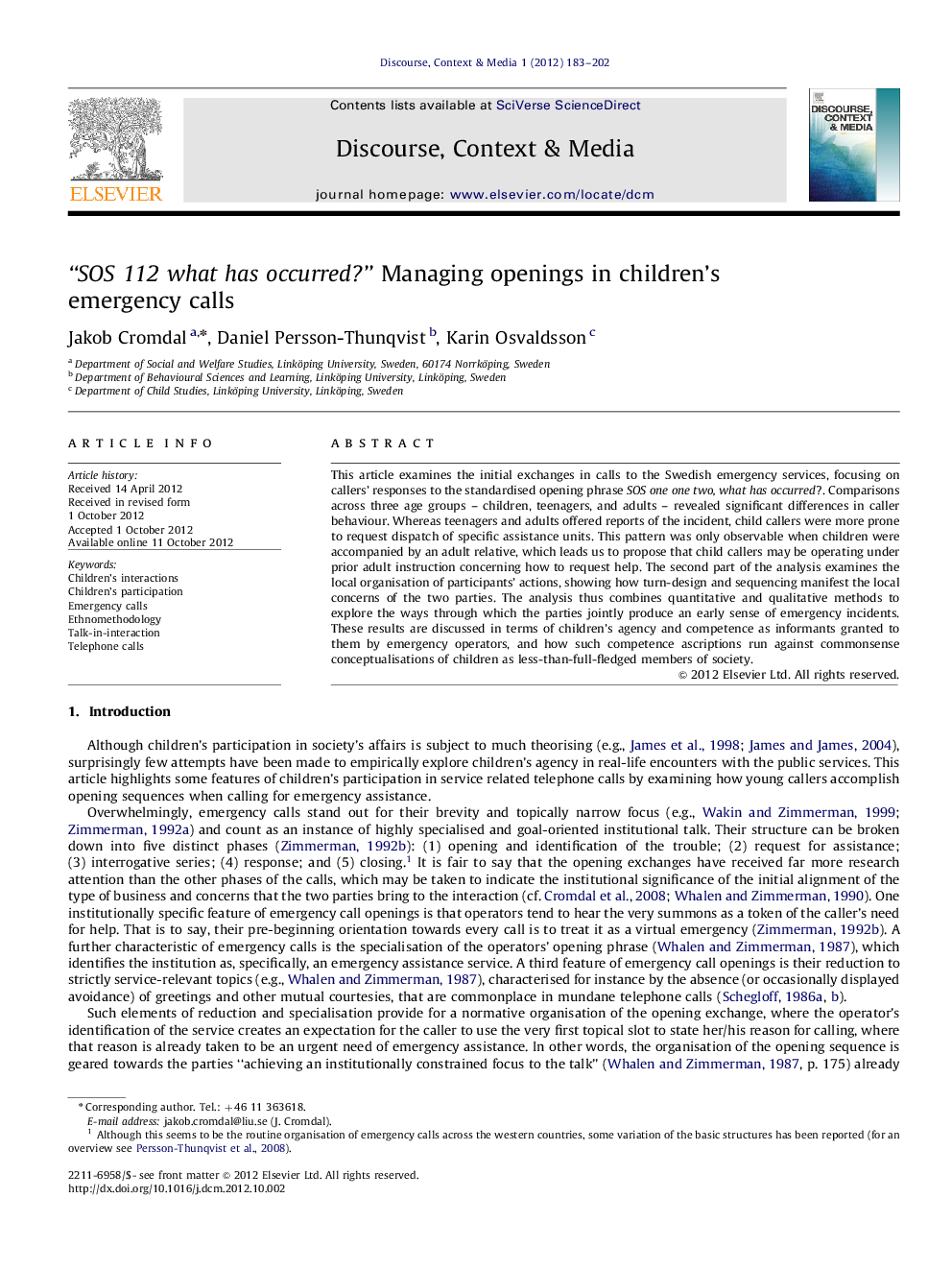| Article ID | Journal | Published Year | Pages | File Type |
|---|---|---|---|---|
| 1100648 | Discourse, Context & Media | 2012 | 20 Pages |
This article examines the initial exchanges in calls to the Swedish emergency services, focusing on callers’ responses to the standardised opening phrase SOS one one two, what has occurred?. Comparisons across three age groups – children, teenagers, and adults – revealed significant differences in caller behaviour. Whereas teenagers and adults offered reports of the incident, child callers were more prone to request dispatch of specific assistance units. This pattern was only observable when children were accompanied by an adult relative, which leads us to propose that child callers may be operating under prior adult instruction concerning how to request help. The second part of the analysis examines the local organisation of participants’ actions, showing how turn-design and sequencing manifest the local concerns of the two parties. The analysis thus combines quantitative and qualitative methods to explore the ways through which the parties jointly produce an early sense of emergency incidents. These results are discussed in terms of children’s agency and competence as informants granted to them by emergency operators, and how such competence ascriptions run against commonsense conceptualisations of children as less-than-full-fledged members of society.
► Emergency operators use a standard opening phrase, inquiring about the nature of the emergency. ► Quantitative analysis examines callers’ opening actions across different age groups. ► When in the presence of an adult relative, child callers are more prone to request help. ► Qualitative analysis examines the interaction between operators and child callers. ► Results are discussed in terms of children’s agency and competence as informants.
